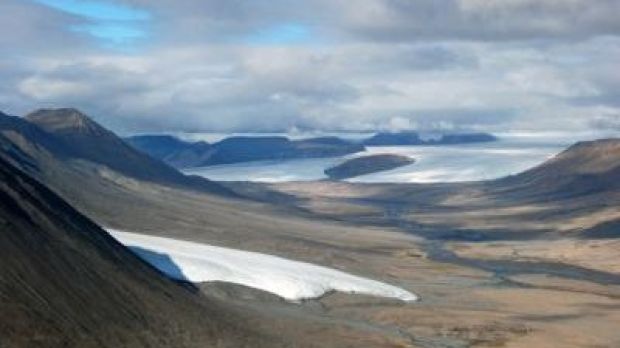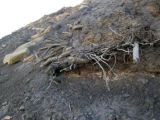A team of researchers from Ohio State University is analyzing the remains of the northernmost mummified forest ever found in Canada, in order to see the way that the plants coped with global cooling a few million years ago, and maybe guess nature's behavior during the current global warming.
The leader of the team is Joel Barker, a research scientist at Byrd Polar Research Center and the School of Earth Sciences at Ohio State University.
In 2009, while he was camping in Ellesmere Island National Park in Canada, he followed a tip from a national park warden, who told him he had seen some wood sticking out of the mud next to a melting glacier.
This year Barker returned with colleagues for a detailed study of the area, and over the summer, they gathered samples from broken tree trunks, branches, roots, and even leaves – everything being perfectly preserved.
“Mummified forests aren't so uncommon, but what makes this one unique is that it's so far north.
“When the climate began to cool 11 million years ago, these plants would have been the first to feel the effects,” said Barker.
“And because the trees' organic material is preserved, we can get a high-resolution view of how quickly the climate changed and how the plants responded to that change.”
Even though it has just begun, the analysis of the remains will include DNA and chemical testing, but for now, the team has identified the species of the most common trees at the site -- spruce and birch.
They also can say that the trees were at least 75 years old when they died, but had been suffering from a great deal of stress during their lifetime – according to their very narrow growth rings and under-sized leaves.
Barker explained that “these trees lived at a particularly rough time in the Arctic.
“Ellesmere Island was quickly changing from a warm deciduous forest environment to an evergreen environment, on its way to the barren scrub we see today.
“The trees would have had to endure half of the year in darkness and in a cooling climate.
“That's why the growth rings show that they grew so little, and so slowly.”
With the help of colleagues from the University of Minnesota and a commercial laboratory in Calgary, Alberta, who identified the wood from the deposit and analyzed the pollen, the team found out that the trees lived between 2 and 8 million years ago, during the Neogene Period.
The current step of the research is to focus on finding other mummified plants at the site, and scan the remains for seeds or fossilized insects.
The more information the researchers manage to gather, the most hints they will have on the way that today's Arctic will respond to global warming.
Barker will describe early results at the American Geophysical Union meeting in San Francisco on Friday, December 17.

 14 DAY TRIAL //
14 DAY TRIAL // 
